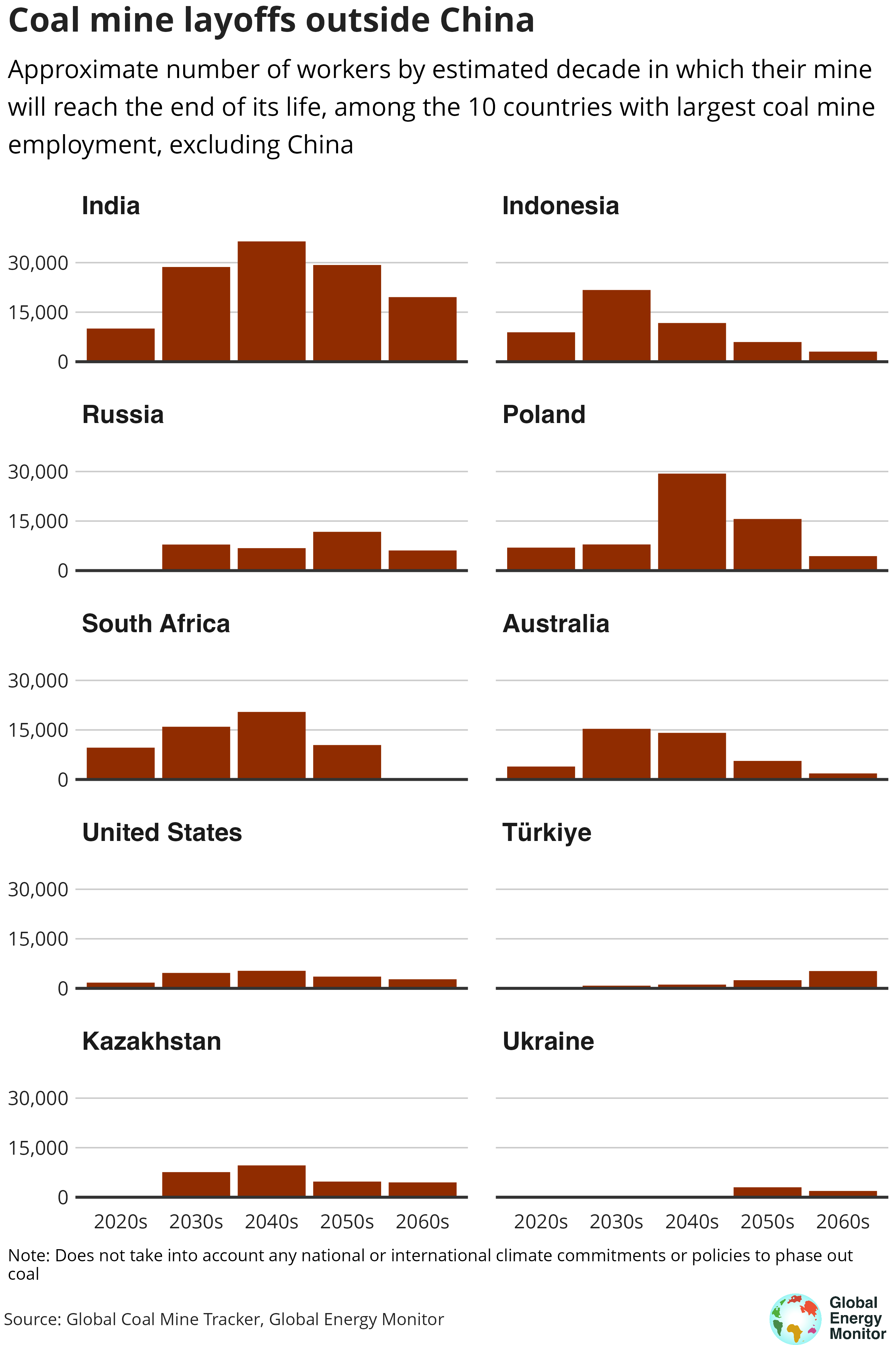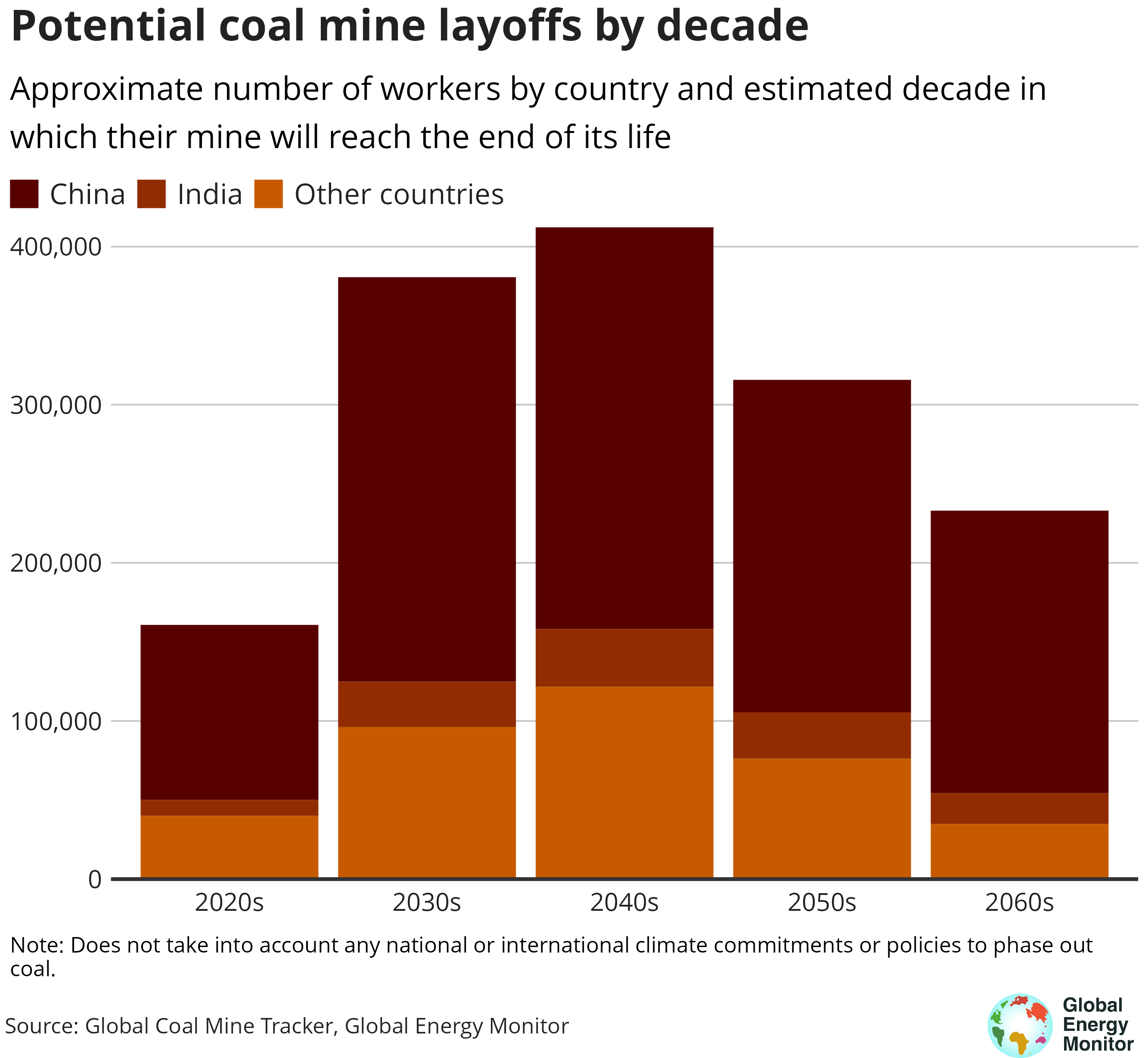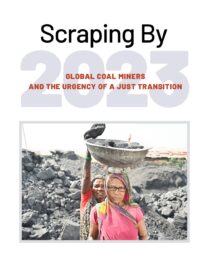Key points
- Nearly half a million workers (414,200) operate mines that may reach their end of operation before 2035, affecting on average 100 workers per day.
- By 2050, nearly 1 million coal mine jobs (990,200) will no longer exist at operating mines given the coal industry’s foreseeable closures, potentially laying off over one-third (37%) of the existing workforce – even without climate pledges or policies to phase out coal.
- China and India will likely be hardest hit: China’s Shanxi province would shed the most jobs globally — nearly a quarter of a million (241,900) by 2050 — while Coal India is the producer facing the largest potential jobs cuts of 73,800 by mid-century.
Coal miners face the harsh prospect of job layoffs due to scheduled mine closures and a market shift toward cheaper wind and solar power generation, whether or not their home country has a coal phase-out policy in place. An average of 100 workers per day face potential unemployment by 2035, finds a new report from Global Energy Monitor.
Data from the Global Coal Mine Tracker provide a first-of-its-kind look into employment at 4,300 active and proposed coal mines and projects around the world that are cumulatively responsible for more than 90% of global coal production.
To estimate potential job losses, the Global Coal Mine Tracker records an operation’s reported “life of mine” — that is, how long coal companies intend to extract coal at the site under existing leases, permits, available reserves, and other economic considerations.

This dataset captures nearly 2.7 million coal miners directly employed at the world’s operating coal mines and finds that the coal industry is expected to shed nearly half a million jobs in the mining sector by 2035, affecting on average 100 workers per day, underlining the urgency of action to prevent widespread social and economic strife.

Coal mine closures are inevitable, but economic hardship and social strife for workers is not. Viable transition planning is happening, like in Spain where the country regularly reviews the ongoing impacts of decarbonization. Governments should draw inspiration from its success in planning their own just energy transition strategies.
Dorothy Mei, Project Manager for the Global Coal Mine Tracker at Global Energy Monitor
Coal mining jobs have an outsize role in remote coal regions where they are anchors of economic activity and sustain ancillary workforces and employment in local consumer and information economies.
The vast majority of these workers are in Asia (2.2 million jobs), with China and India expected to bear the brunt of coal mine closures. China has more than 1.5 million coal miners who produce over 85% of its coal, which accounts for half of the world’s output. The northern provinces of Shanxi, Henan, and Inner Mongolia mine over one-quarter of the world’s coal and employ 32% of the global mining workforce — approximately 870,400 people.

India, the world’s second largest coal producer, has a workforce about half the size of China’s Shanxi province. The country officially employs approximately 337,400 miners at its operating mines, though some studies suggest the local mining sector has four “informal” employees for every one direct employee.

The coal industry has a long list of mines that will close in the near term–many of them state-owned enterprises with a government stake. Governments need to shoulder their share of the burden to ensure a managed transition for those workers and communities as we move into a clean energy economy.
Tiffany Means, Researcher at Global Energy Monitor
State-owned Coal India is the world’s coal producer facing the most potential layoffs of 73,800 direct workers by 2050, underlining the imperative that governments remain involved in planning for coal worker transitions.
The coal industry itself shoulders responsibility for the sector’s unpredictable future. GEM has found that most mines expected to close in the coming decades have no planning underway to extend the life of those operations or to manage a transition into a post-coal economy.
We need to put workers first on the agenda if we want to make sure the just transition isn’t just talk. With technologies and markets primed for an energy transition, we have to be proactive about the unique concerns of coal miners and their communities.
Ryan Driskell Tate, Coal Program Director at Global Energy Monitor


